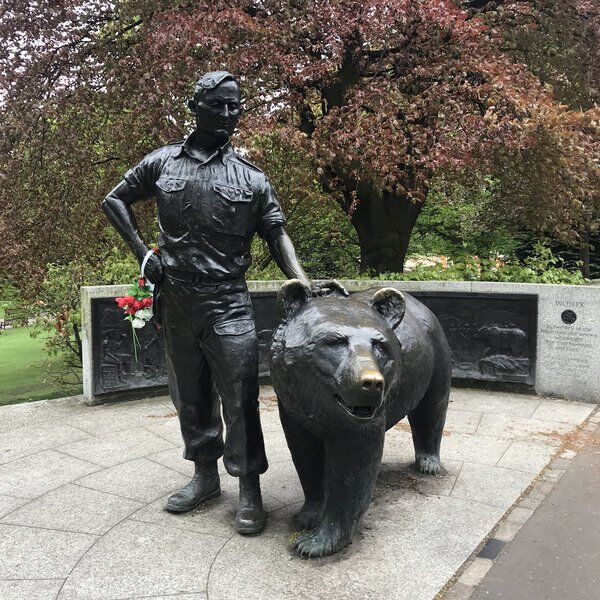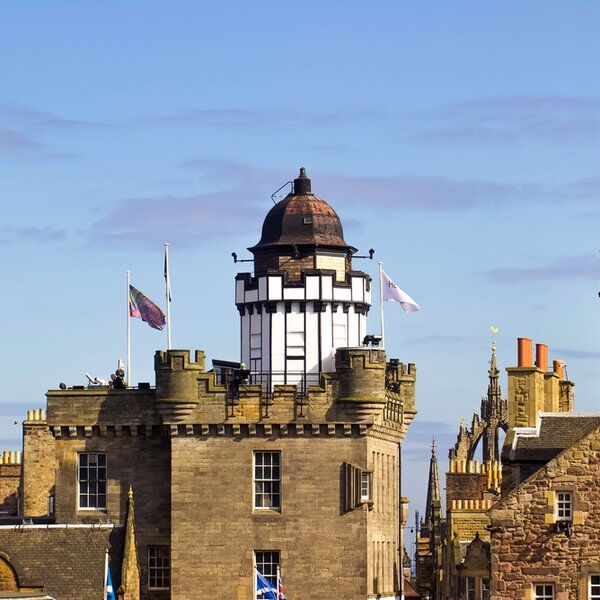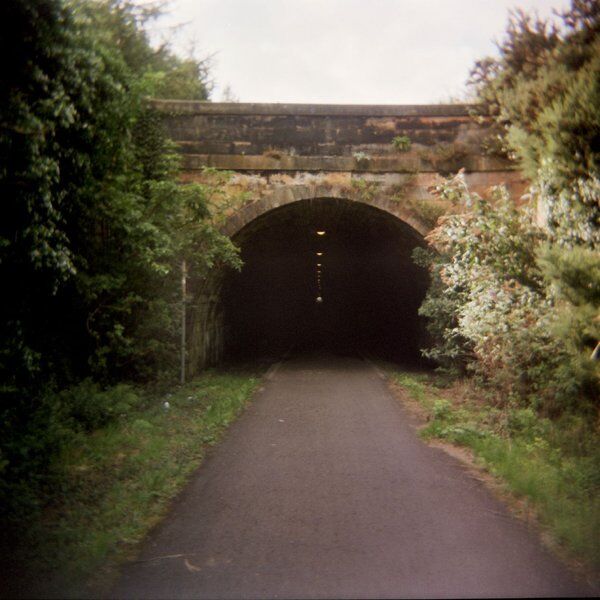
Exploring Edinburgh's Haunted Past: Greyfriars Kirkyard
Edinburgh's historic Old Town is full of hidden treasures, from The Witches’ Well to The Flodden Wall. But it still does not contain as many secrets and eccentricities as that of one of its resident landmarks—Greyfriars Kirkyard. Established in 1620, the kirkyard, or rather churchyard, is ‘riddle-d’ (... you’ll get it later!) with many fascinating details including names of characters from famous novels, the legend of a Skye Terrier, and a particularly ‘bloody’ MacKenzie. Yet beneath the surface, lies a darker connection still as tales of suffering and tragedy manifest in dark spirits and strange happenings.
Would you be brave enough to visit Greyfriars Kirkyard?
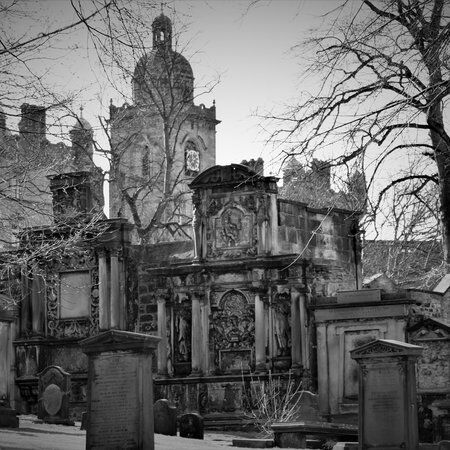
The History of Greyfriars Kirkyard
Greyfriars Kirkyard was originally a Franciscan friary that had been dissolved in 1559. It had been chosen as a burial ground due to the unsanitary conditions of Edinburgh's Old Town and the need for a dedicated space to bury the dead. Construction of the main section of the kirk began in 1602 and was completed in 1620.
Modifications were necessary over the years, including the rebuilding of the west end in 1718 after a gunpowder explosion, and alterations to accommodate two separate congregations. A devastating fire in 1845 led to further renovations, resulting in the interior fittings seen today. Reconstruction efforts between 1932 and 1938 saw the installation of a new wooden ceiling and the removal of a dividing wall.
In the face of persistent vandalism and misuse the kirkyard was eventually locked by the City of Edinburgh Council. Today, visitors can explore the site by special arrangement with guides at Greyfriars Kirk during opening hours or embark on a City of the Dead Tour to witness the haunting Black Mausoleum.

The National Covenant and Greyfriars Kirkyard
Greyfriars Kirkyard holds a significant place in Scottish history as the site where the National Covenant was signed in February 1638. It was the beginning of the Covenanting movement. The Covenanters sought to maintain Presbyterian doctrines and reject King Charles I's Catholic influence. The National Covenant was drawn up as a consequence, demanding radical changes in how Scotland was governed.
The signing of the Covenant marked the beginning of a tumultuous period in Scottish history, as Charles I perceived this act as treason and declared war on the Covenanters. Following the Battle of Bothwell Bridge on June 22, 1679, as many as 1,200 defeated Covenanters were brought to Edinburgh, overwhelming the city's prisons and necessitating the creation of a makeshift "prison" in a field adjacent to the kirkyard.
Dubbed Covenanters Prison, this grim enclosure held around 400 prisoners in dire conditions. With minimal shelter and limited rations, the men endured unimaginable suffering and many died from exposure and execution. Today, a memorial stone commemorates their suffering and sacrifice for their cause and the kirkyard remains a symbol of their struggle.
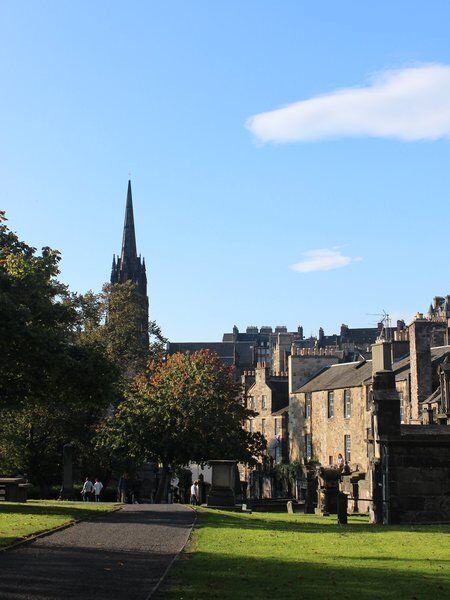
Bloody MacKenzie at Greyfriars Kirkyard
The domed tomb of Sir George Mackenzie, known as "Bloody”, or “Bluidy”, Mackenzie casts a chilling shadow over Greyfriars Kirk in Edinburgh. As Lord Advocate of Scotland during the Scottish Reformation’s infamous Killing Time, Mackenzie was responsible for the imprisonment, torture, and execution of countless Covenanters. This earned him a fearsome reputation, and stained his legacy with bloodshed and cruelty. Today, his tomb in Greyfriars Kirkyard remains untended as a result.

The Haunting Legends of Greyfriars Kirkyard
If you thought we were exaggerating earlier, we weren’t because Greyfriars Kirkyard actually has a reputation as one of the most haunted locations in Europe. Visitors to the cemetery have reported experiencing strange sensations and even sighting ghosts, with one of the most infamous spirits being George 'Bloody' MacKenzie, known as the 'MacKenzie Poltergeist.' Participating in ghost tours, many have claimed to have been physically assaulted by an unseen force.
Despite its creepy reputation, Greyfriars Kirkyard is a place where life and death meet at unexpected cross roads. In Scotland, it is not uncommon to find locals engaging in everyday activities within cemetery grounds, from enjoying a picnic and socialising to working out and practising yoga.

The Legend of Greyfriars Bobby
Greyfriars Kirkyard is the final resting place of numerous prominent individuals, including James Hutton, Robert Adam, Mary Erskine, and Henry Mackenzie. However, its most famous resident is Greyfriars Bobby, a loyal Skye Terrier. The story goes that Bobby faithfully guarded the grave of his master, John Gray, in Greyfriars Kirkyard for an astonishing 14 years, until his own passing in 1872.
Bobby's loyalty captured the hearts of the public and even gained the attention of Edinburgh's Lord Provost, William Chambers, who, along with others, provided Bobby with food and comfort during his time at his master's grave. Over the years Bobby's story has inspired books, films, and countless tributes to his memory. Today, the loyal dog is also buried within the kirkyard. His headstone was erected by the Dog Aid Society in 1981 and receives many visitors from far and wide.

Monuments at Greyfriars Kirk
Deterring Grave Robbers
Enclosed burial lairs, primarily located on the south edge and in the "Covenanters' Prison," were erected as a deterrent against grave robbery—an issue that plagued the graveyard in the 18th century. These lairs, characterised by solid stone walls or iron railings, served as protective barriers for the resting places of the deceased.
Additionally, the kirkyard features two low ironwork cages known as mortsafes. These leased structures safeguarded bodies from grave robbers and ensured the sanctity of the deceased, particularly during the era of the resurrection men in the early 19th century.

Mural Monuments of Greyfriars
The Greyfriars landscape contains some of Scotland's most beautiful mural monuments, dating back to the early 17th century. These monuments are rich in symbolism depicting themes of mortality and immortality. Some of these symbols include the Death Head, Angel of the Resurrection, and the King of Terrors.
Memorial Monuments
Among the range of monuments inside Greyfriars Kirkyard is the Martyr's Monument, a tribute to the executed Covenanters. The memorial of Duncan Ban MacIntyre, a celebrated Gaelic poet, underwent renovation in 2005 through a community fundraising campaign. Also important is the monument of John Byres of Coates, crafted in 1629 as it is one of the last works of the royal master mason, William Wallace.
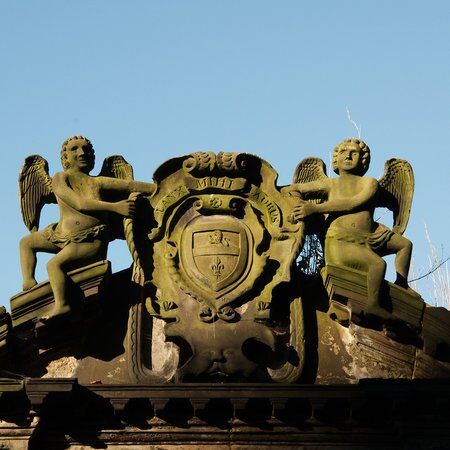
Greyfriars Kirkyard in Art
During the early days of photography in the 1840s, Greyfriars Kirkyard became the setting for portraits and tableaux captured by David Octavius Hill and Robert Adamson. These images, such as "The Artist" and "The Gravedigger," captured the haunting beauty and historical significance of the kirkyard, immortalising it as part of Scotland’s culture and heritage.
Greyfriars Kirk: The Harry Potter Graveyard
One final legend of Greyfriars Kirkyard, is that it is rumoured to have inspired J.K. Rowling during her time in Edinburgh. Although, it's not difficult to see why people have come to this conclusion. As you navigate the cemetery, you'll discover that eight of the tombstones have the same names as the author’s iconic characters. Coincidence? We think not! In fact it has even been confirmed by Rowling herself: "I have got names from saints, place-names, war memorials, gravestones."
If you want to discover these names for yourself then here are some tips:
- Potter: Begin your quest by turning right after entering the gates and exploring the left side grass area. Here, you'll find the tombstone of Anne and Robert Potter, the inspiration for Harry's surname.
- Scrymgeour: Directly next to Anne Potter's grave lies the tombstone of Daniel Scrymgeour, possibly inspiring the character Rufus Scrimgeour, Minister of Magic.
- Cruikshanks: Nearby, you'll stumble upon the tombstone of 'Cruikshanks,' similar to Hermione Granger's cat, Crookshanks.
- Mrs. Moodie: Head toward the central building and join the main path until you reach the Flodden Wall. Here, you'll find the tombstone of Mrs. Elizabeth Moodie, reminiscent of Alastor Moody.
- Black: Continuing along the wall, you'll encounter the graves of Charles and Francis Black, like the Black family from the series.
- Thomas Riddell: Near the end of the path, you'll discover the tombstone of Thomas Riddell, bearing resemblance to Tom Riddle, later known as Voldemort.
- McGonagall: Finally, facing Thomas Riddell's grave, turn left and follow the path to find the tombstone of William McGonagall, reminding us of Professor Minerva McGonagall.
But this isn’t the only place rumoured to have inspired Rowling during her time in Scotland. Read more about her inspirations for the famous Harry Potter novels in our blog post on Glasgow's Black Stone Chair.
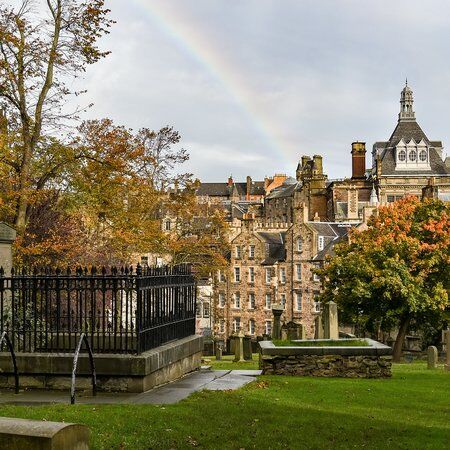
Explore Edinburgh with CityDays
The best way to discover more hidden gems around Edinburgh is to take your time and, ideally, have a pre-planned route that takes you past all the noteworthy nooks and hidden gems.
We can help you there!
CityDays combines the fun of an outdoor treasure hunt with the historic facts and whimsical trivia of a walking tour.
Answer riddles, solve puzzles and learn more about Edinburgh's vast history in a new and interactive way!
Take the stress out of planning your visit to Edinburgh and book your adventure today!
Not visiting Scotland this time? Don’t worry, you’ll find us all over the world.












